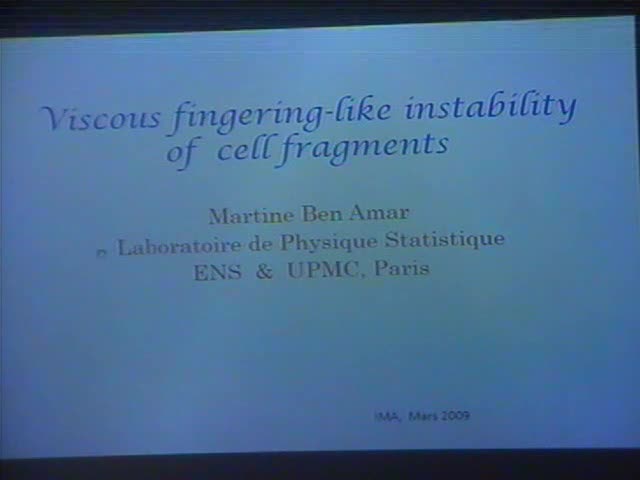Viscous fingering-like instability of cell fragments: a non-linear analysis
Presenter
March 23, 2009
Abstract
I will present an hydrodynamic model for the motility of keratocytes or
fibroblasts on substrates in vitro. Cells or fragment of cells have been
observed to switch from a stationary round state to a motile and
anisotropic crescent-shaped state. Experimentally, a polarization of the
actin network occurs in a preferred direction prior to motility and
determins the direction of motion. In this talk, I will present first the
model for actin flow of Callan-Jones et al for two-dimensionnal cells
lying on a substrate with a strong friction. Using Schwarz function
techniques, we derive a dynamic equation for the shape contour including
the polymerisation-depolymerisation process and show that static circular
shapes are stable for enough tension of the lipidic membrane. We extend
the model to incorporate the actin cortex whose anisotropy is due to a
preferred orientation at the lipidic membrane. To do so, we use the
theory of active polar gels of Kruse et al. inspired from the theory of
liquid crystals. Since this cortex has a size of order one ten of the
cell, we perform a boundary layer analysis. The presence of the cortex is
responsible for a modification of the boundary conditions at the cell
border. We show that an increase of the motor activity destabilisizes the
cell in the tensile case but we also show that a polarization of the whole
actin network is necessary to induce a translation motion.
